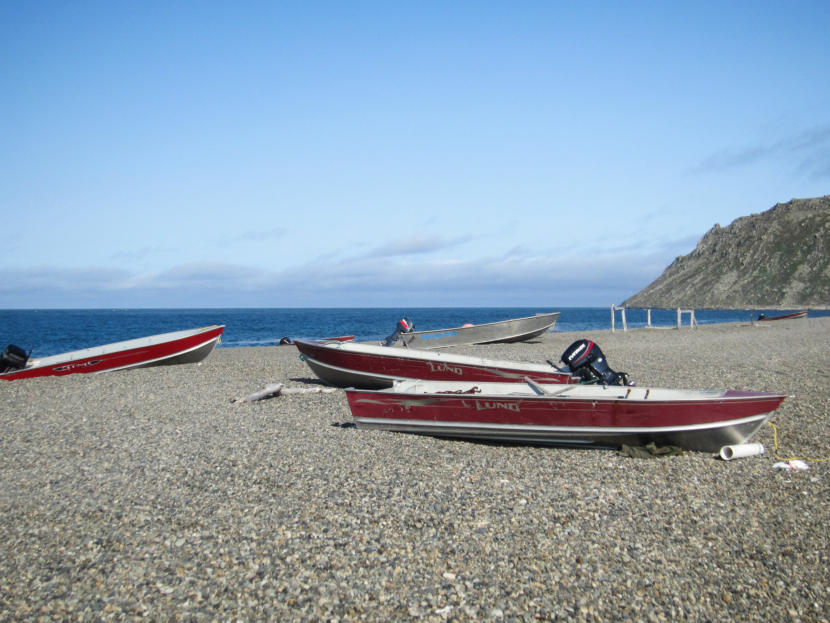
Fuel rations have been imposed on all Gambell residents for about a month, after a barge shipment from last year failed to deliver the community’s supply of fuel. The community’s ability to subsistence hunt and stock up on food for the future is being negatively impacted by this fuel shortage.
According to multiple sources, the community’s summer fuel delivery from Crowley could not be unloaded in Gambell last June. City Clerk Charlotte Apatiki said there are a couple reasons why Gambell was left without its yearly supply of fuel, including a leaking fuel line.
“So they (the barge) couldn’t deliver the first run of fuel because of the fuel leak. And then their second attempt was later on in the summer. We were stormy for about a week then or maybe a little over a week, and they couldn’t get to the fuel line over there at north beach to deliver the gas, so they (the barge) just turned back,” she said.
Crowley Fuels was the fuel barge operator trying to unload fuel at Gambell on those occasions. The company is also one of the main fuel providers for many other communities in the Bering Strait region.
The U.S. Army Corps of Engineers has noted that several fuel barge operators say landing a vessel at Gambell is always weather dependent. But residents say the Crowley barge captain could have landed on at least one of the attempts made last year.
After reaching the last of their fuel reserves last month, Gambell’s Native Store, which is owned by the Native Village of Gambell (IRA/Tribal Council), had to put restrictions on resident’s fuel purchases. These make for trying times for Jeremiah Apatiki, the local store manager.
“It’s hard…I have to limit everybody, their ATV. For boating, it’s really hard now because it’s spring time and its boating season and everyone needs their gas. So we limit them now, we limit them [to] two gallons a day per ride and the boat captains (get) 30 gallons for now, per trip,” he said.
Apatiki said 30 gallons per day for their captains is not enough if they’re already having to travel 70 miles or further away from the community to find suitable ice for hunting.
For now, Gambell’s Native store has paid for the community to receive three emergency fuel deliveries via airplane at 3,900 gallons a piece, while ANICA is facilitating the delivery. The hope is that these shipments will support Gambell’s needs until this summer’s fuel barge delivery comes in June. Jeremiah Apatiki said their first 3,900-gallons lasted about a week.
Apaitiki said Gambell’s three main entities: the IRA Council, city, and village corporation, were concerned the cost of flying in emergency fuel would gradually get more expensive and wouldn’t last until the next fuel barge arrives.
“(So) they made a resolution to the governor, asking for assistance, requesting that the National Guard bring shipments in so our [fuel] prices wouldn’t rise. ANICA is probably going to raise the price every time they fly a shipment of gasoline in(to Gambell),” she said.
It is unclear what the state’s response will be to Gambell’s emergency situation as a spokesperson for Governor Mike Dunleavy’s office could not be reached for comment. According to a spokesperson with the National Guard, as of this week they have not been involved in any aviation-mission related to delivering fuel to Gambell.
Apatiki said the community restrictions on fuel usage will be in effect until sometime next month, whenever the next fuel barge can unload.
